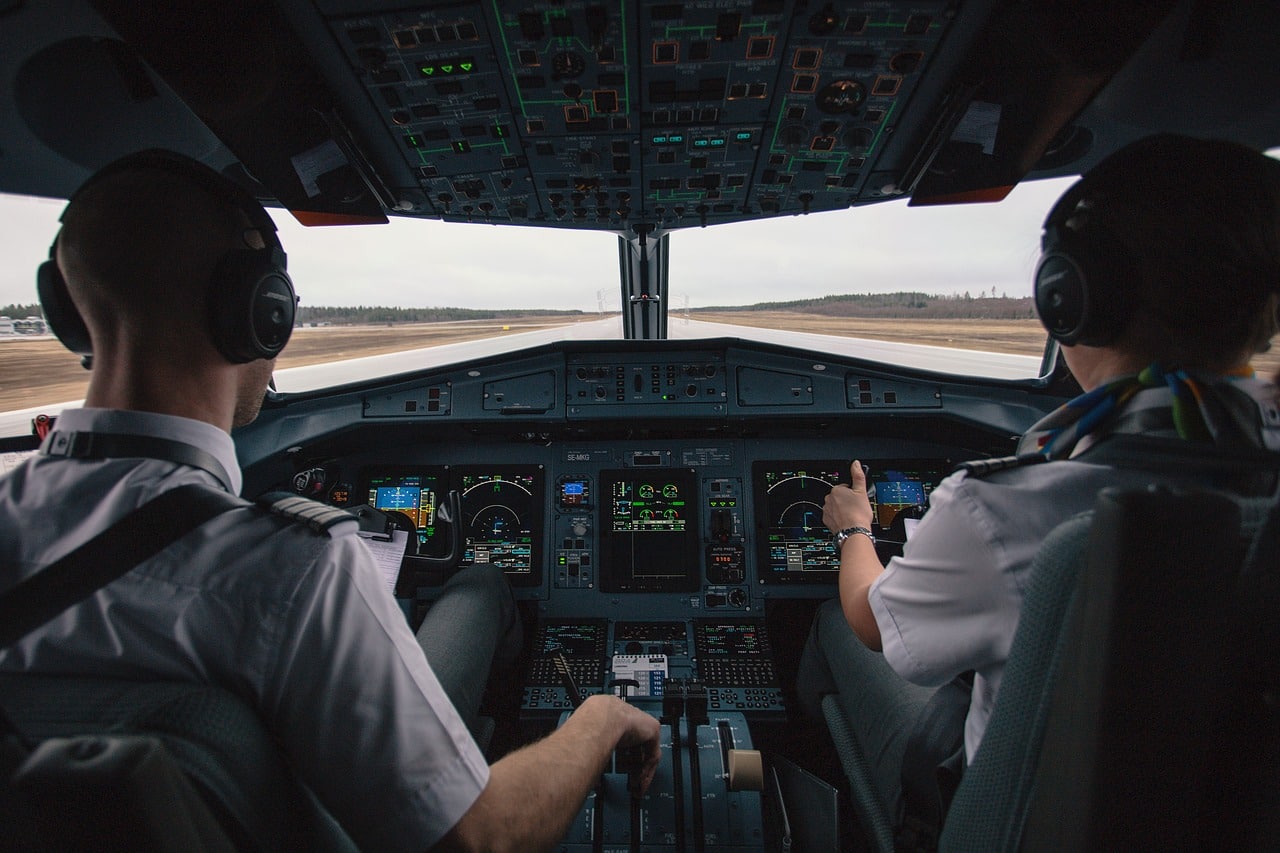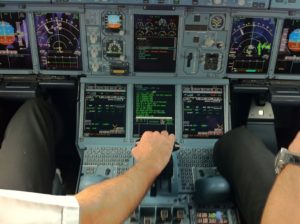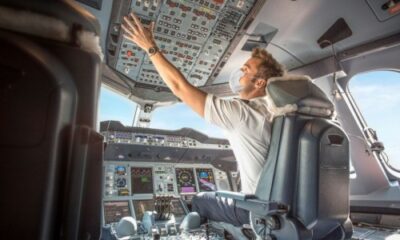Aerospace
FAA mandatory Rules for Instagram Pilots Footage

FAA mandatory Rules for Instagram Pilots Footage – In this new era where the world is so small, you can connect to anyone around the world by flying a luxurious Gulfstream G650 or travelling by an low cost airline, posting pictures and selfies about travelling or your work or your hobby or an incident occurred in aircraft is common. For passenger flying and posting it in social media gets likes and appreciation but is it OK for the same by a pilot?
As per the Department of Transportation, Federal Aviation Administration (FAA) using of Personal Electronic Devices (PED) on the flight deck is prohibited under part 121 of FAA. This rule states flight-crew members are prohibited from using a personal wireless communications devices or laptop computer for personal use while at their duty station on the flight deck while the aircraft is being operated. It is intended to ensure that certain non-essential activities to not get more attention than situational activities, or to not make more challenging to other crew members work and management in the flight deck. But pilots of Instagram and Facebook has shown how poorly the rules are being followed. Usage of electronic devices in cockpit to entertain take-offs and landing videos and pictures, are these allowed? or its prohibits? It leaves us a question.
Read more : 12 things to know about Airbus A320 family
When are pilots allowed take pictures?
In the United States, different regulations apply to different kinds of flights. Lets take an example, If you are a commercial flight pilot with passengers and using digital camera or film with no ability to transfer the data wirelessly, and you are not in a critical phase like taxi, take-off or landing, and your camera has been approved for mounting and recording by FAA, You are Good to Go! Captain.
If you are in jump-suit just ask permission of the captain.
Smartphones and tablet are prohibited whether it is personal or issued by airlines, FAA states what makes a device “personal” is how it’s being used, not its owner.
A personal wireless device may only be used if it is directly related to operation of the aircraft, or for emergency, safety-related, or employment-related communications, according to air carrier procedure.
Read more : What Happens When Lightning Strikes an Airplane?
According to the source from Quora by Tom Chai– This is taken by the crew of Qantas 32 when their engine exploded, creating multiple system degradation and failures, with ECAM messages flooding the screen for them to troubleshoot, they handled the situation correctly and expertly, saving everyone on board and minimized asset losses, yet they still managed to take pictures, because this really is an once-in-a-hundred-lifetimes event.


Aerospace
Which is bigger 777x or 787 aircraft ?

The 777X is a new series of the Boeing 777 family and is designed to be larger and more efficient than its predecessor. It features two variants: the 777-8 and the 777-9, being the larger of the two.
The Boeing 777X emerges as the larger sibling within the Boeing family, representing a significant leap forward in both size and efficiency. Comprising two variants, the 777-8 and the 777-9, the latter takes the crown as the larger of the two. With its expansive fuselage and impressive wingspan, the 777X is tailored for long-range journeys and boasts a substantial passenger capacity.
On the other hand, the Boeing 787, affectionately known as the Dreamliner, occupies a niche in the market as a smaller yet formidable aircraft designed for medium to long-range flights. Its distinguishing feature lies in its composite fuselage, a technological marvel that renders it lighter and more fuel-efficient compared to conventional aluminum counterparts. The Boeing 777X is larger than the Boeing 787 aircraft.
When it comes to passenger capacity, the 777-9 reigns supreme, typically accommodating a sizeable contingent of 400-425 passengers in its standard configuration. In contrast, the 787, with its more modest dimensions, typically carries between 240-290 passengers, depending on the variant and layout.
One of the remarkable innovations introduced with the 777X is its folding wingtips, a feature designed to address the logistical challenges of accommodating such a large aircraft in conventional airport gates. These folding wingtips enable the 777X to retract its wings, allowing it to fit into gates designed for smaller aircraft while still reaping the benefits of an extended wingspan during flight, thereby enhancing fuel efficiency and operational flexibility
Aerospace
China Secures Production Certificate for Mass Production of Pilotless eVTOL Aircraft

The first passenger-carrying pilotless electric vertical takeoff and landing (eVTOL) aircraft in the world, the EH216-S, has received the Production Certificate for its eVTOL aircraft from the Civil Aviation Administration of China (CAAC).
This is a significant milestone for EHang Holdings Limited, the leading UAM technology platform company in the world. This outstanding accomplishment is another big step towards mass manufacturing for the eVTOL aircraft and the ensuing commercial operations, building on the ground-breaking acquisition of the Type Certificate and the Standard Airworthiness Certificate for the EH216-S.
The PC is a crucial certificate that the aircraft maker receives from the CAAC, the country’s aviation authority. By obtaining this certificate, EHang has demonstrated that it has set up a quality management system for mass production that satisfies the airworthiness regulation standards set forth by the CAAC, and the company has been given permission to continue producing mass quantities.
It is also a strong guarantee of the calibre of the goods made by EHang. Raw materials, supplier management, manufacturing organisation, production quality control, aircraft pre-delivery test, after-sales repair and maintenance, etc. are all included in the mass production quality management system for the EH216-S.
To ensure that every aircraft and its components that roll off the production line strictly adhere to the approved type design and safety requirements, the system sets clear guidelines and documentation for every step in the production procedure. This ensures comprehensive traceability and safety control.
Aerospace
Four Airbus A380 Superjumbos lined up to be scrapped

In a strategic move aimed at reclaiming valuable resources from the iconic Airbus A380 aircraft, VAS Aero Services and Dr. Peters Group have announced a significant collaboration.
This partnership marks a milestone in aviation logistics and aftermarket services, with four of these colossal planes slated for teardown and redistribution of used serviceable material (USM).
The venture between VAS Aero Services, renowned for its expertise in aircraft dismantlement, and Dr. Peters Group, a prominent Germany-based investment fund management firm, underscores a commitment to sustainable aviation practices. This isn’t their first foray into scrapping A380s; their successful partnership has already seen the dismantlement of these aircraft, making them pioneers in this niche.
Under the agreement, the latest consignment brings the tally to eight A380s entrusted to VAS by Dr. Peters Group. Managing Director Christian Mailly of Dr. Peters Group emphasized the trust placed in VAS, citing their unparalleled capabilities in dismantlement and aftermarket sales network. It’s a strategic move in response to the growing demand for quality USM parts, particularly with the resurgence in reliance on the A380.
Notably, the teardown process will be carried out at various locations, optimizing the positioning of harvested parts to cater to different markets. While some parts will be positioned in Europe to support operators in the region and the Middle East, others will remain in the Asia-Pacific region. This meticulous strategy ensures efficient access to spare parts, benefiting MROs and airlines across these markets.
The decision to retire these A380s comes at a time when operators are reassessing fleet strategies amidst evolving market dynamics. Despite initial plans for quick retirement due to the emergence of more fuel-efficient alternatives, factors such as a rebound in long-haul demand and delays in new widebody deliveries have prompted operators to reconsider. The A380, with its unique capacity and capabilities, presents a practical solution for short-term capacity management.
























